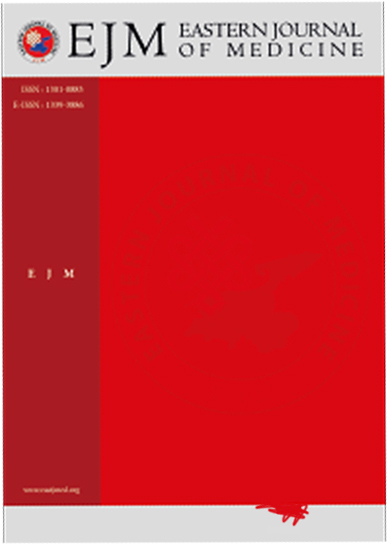Essential Trace Element Levels in Patients with Cutaneous Anthrax
Irfan Binici1, Mehmet Parlak2, Mahmut Sunnetcioglu1, Ali Irfan Baran1, Mehmet Reşat Ceylan3, Ali Rıza Kul4, Halit Demir4, Sevdegül Bilvanisi5, Gizem Gizli5, Zübeyir Huyut61Department of Infectious Diseases and Clinical Microbiology, Faculty of Medicine, Van Yuzuncu Yıl University, 65080, Van, Turkey,2Department of Medical Microbiology, Faculty of Medicine, Van Yuzuncu Yıl University, 65080, Van, Turkey,
3Department of Infectious Diseases and Clinical Microbiology, Faculty of Medicine, Harran University,63510, Sanlıurfa, Turkey
4Department of Chemistry, Faculty of Science, Van Yuzuncu Yıl University, 65080, Van, Turkey,
5Department of Emergency, Faculty of Medicine, Van Yuzuncu Yıl University, 65080, Van, Turkey,
6Department of Biochemistry, Faculty of Medicine, Van Yuzuncu Yıl University, 65080, Van, Turkey,
INTRODUCTION: The causative microorganism in anthrax is Bacillus anthracis and this disease is more common in some regions of Turkey. Changes in trace elements other than Fe in anthrax infection have not been studied. In this study, levels of some trace elements (iron [Fe], copper [Cu], zinc [Zn], magnesium [Mg], manganese [Mn], cobalt [Co], cadmium [Cd], lead [Pb]) were investigated in patients with cutaneous anthrax.
METHODS: Fifteen patients with cutaneous anthrax and 15 healthy individuals matched for age/sex were included in the control group. Anthrax was diagnosed according to contact status with animals, symptoms, examination, and microbiological results. Determination of the levels of the trace elements and heavy metals was performed by Atomic Absorption Spectrophotometer (UNICAM-929 spectrophotometer).
RESULTS: Serum iron, lead, and cadmium levels were significantly higher in the patients than in the control subjects (p<0.001). Serum magnesium, manganese, zinc, copper, and cobalt levels were significantly lower in the patients than in the control subjects (p<0.001, Co<0,05). The Cu/Zn molar ratio was not significantly increased in the patients with cutaneous anthrax than in the control subjects.
DISCUSSION AND CONCLUSION: It has been reported that Fe, Cd, and Pb levels are low and Cu level is high in infectious diseases. But we determined the opposite situation in the patients with cutaneous anthrax. As a result, it can be said that the detection of high Pb and Cd levels in the cell in anthrax disease suppresses the immune system. Also, Zn can be used as a marker for this disease.
Manuscript Language: English














